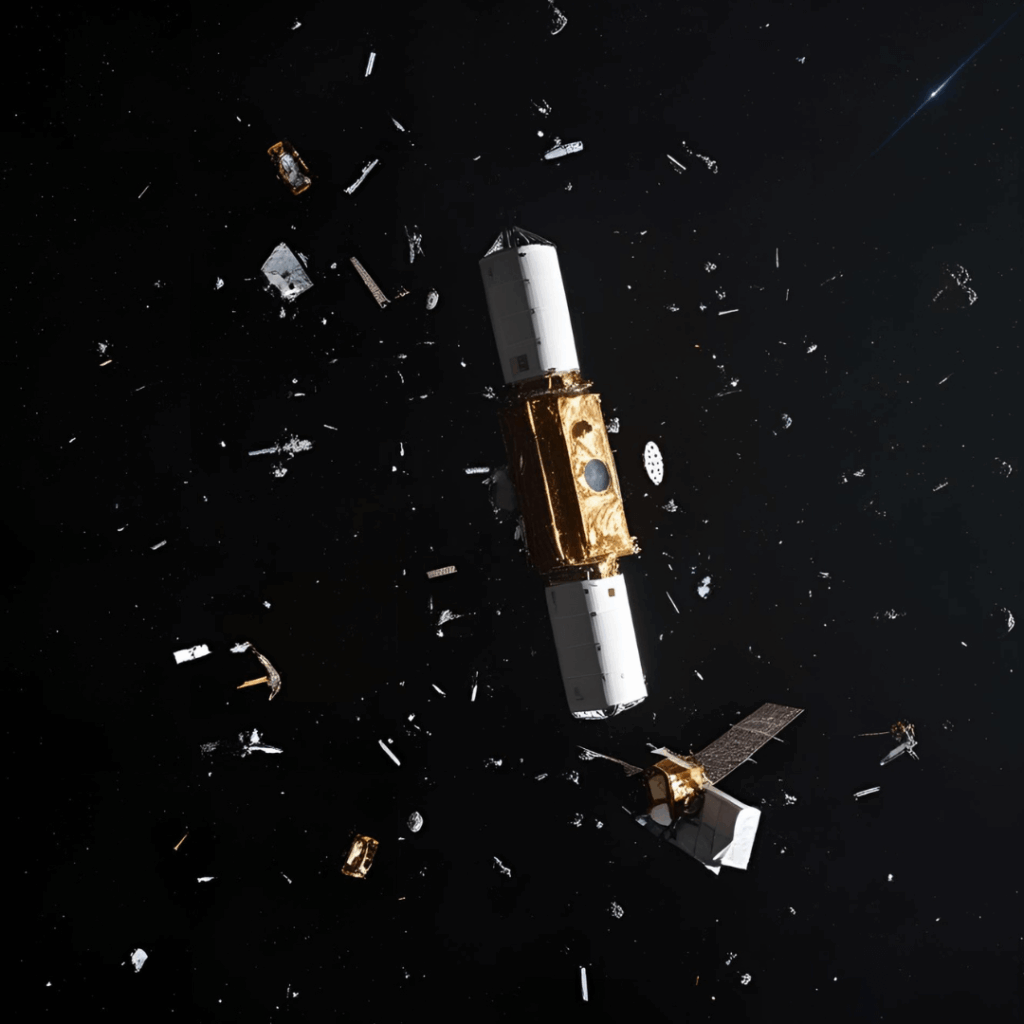Some time ago, I came across cynical reactions on social media to India’s Chandrayaan-3 soft landing. As an Indian and a global citizen, this historic feat filled me with pride. So, the criticism felt unwarranted. I couldn’t ignore it and posted a lengthy response on Facebook.
A former colleague replied with a question that stuck with me: “If we haven’t managed to fix Earth’s environment, should we really be trying to mess up the Moon?”
That comment led me to this post.
Although her point was about focusing on Earth’s environmental issues instead of space missions, it got me thinking—are we truly “messing up” the universe before we even understand our solar system? What is space junk, and is space exploration a waste of money?
Benefits of space exploration
One of the common comments I saw online was that a developing country like India should prioritize food, housing, and sanitation over lunar missions.
Why can’t a country work on multiple goals at the same time? In varying degrees, food security, homelessness, and inadequate sanitation are all global issues, not limited to developing countries.
India’s missions are not only cost-effective but also technologically innovative. Chandrayaan-3, for instance, cost around $75 million, compared to NASA’s Artemis I mission that had a price tag of $4.1 billion.
The benefits of space exploration extend far beyond curiosity or national pride:
- People in urban and rural areas get access to information, facilities, and markets they otherwise would not have been privy to.
- Satellite imagery aids agriculture, weather forecasting, and disaster management.
- Space-based data helps monitor deforestation, glacial melt, and other climate-related phenomena.
- Missions like NASA’s DART offer planetary defense capabilities.
- India earns revenue by launching satellites for other countries and now has a growing space-tech start-up ecosystem.
What Is Space Junk?
This may sound naïve, but since it takes several light years to travel from one planet to another, I used to think space was too vast for clutter to be a problem. That view changed as I learned more.

What does space debris or junk consist of? It includes, but is not limited to:
- Natural meteoroids (less common, but still a threat)
- Rocket upper stages left in orbit
- Inoperative satellites in low Earth or geostationary orbit
- Remnants from satellite explosions or collisions
- Debris from anti-satellite missile tests
- Tools and items lost by astronauts
- Even something as small as chipped paint from spacecraft
How Much Space Junk Is Out There?
According to the European Space Agency (ESA), as of 2024, there were approximately:
- 40,000+ objects larger than 10 cm
- 1 million+ objects between 1cm and 10 cm
- 130 million fragments larger than 1 mm
Most of this debris is in Low Earth Orbit (LEO), which is also the preferred zone for communications, imaging, and Earth observation satellites due to its accessibility and low latency.
Why Is Space Junk a Problem?
With private players entering the space exploration race, the number of satellites is rising rapidly. SpaceX’s Starlink project alone plans to launch over 12,000 satellites, many already in orbit.
ISRO has observed that by 2030, the number of active satellites in Low Earth Orbit (LEO) is expected to surpass the amount of space debris larger than 10 cm, which will naturally heighten the risk of collisions.
Even tiny objects pose threats. At speeds up to 28,000 km/h (17,500 mph), something as small as a paint fleck can damage spacecraft. The International Space Station (ISS) has had to manoeuvre on several occasions to avoid collisions.
Some debris falls back to Earth. While most burn up, not all do. For example, Russian rocket stages have fallen in Siberia, leaking carcinogenic propellants that harm local ecosystems (Earth.org).
The ISS is set to be decommissioned around 2031, and while most of it is expected to disintegrate on re-entry, there are still environmental concerns around what survives and reaches Earth’s oceans.
Sustainability in Space Exploration
Sustainability is about judicious use of the resources that we have with us today, so our future generations don’t have to deal with the shortage of said resources.
The term sustainable development is mostly associated with being able to achieve economic progress whilst ensuring it doesn’t negatively affect our ecological environment.
How can we connect this to space exploration?
Space junk is growing in number and it could affect future missions. There’s a need for sustainable technological practices in space exploration. The environmental implications of space missions from resources used to manufacture spacecraft, fuel consumption, and emissions need consideration.
Fuels like kerosene and methane have environmental costs. While liquid hydrogen and oxygen are cleaner, they are harder to store and require larger quantities. Efforts are being made to minimize these impacts through innovation and active governance.
Here are a few noteworthy initiatives in regard:
- Debris Removal Efforts: ESA’s ClearSpace-1 and companies like Astroscale are pioneering missions to remove debris.
- Zero Debris Charter: ESA’s new initiative for a cleaner orbit by 2030.
- Reusability: From Space Shuttle, to Falcon 9 or ISRO’s POEM, which reused the fourth stage of a launch vehicle as a platform for experiments.
- Sustainable propulsion alternatives: Use of solar or electric-powered propulsion systems.
- Regulatory Frameworks: The UN’s Long-Term Sustainability Guidelines, the IADC debris mitigation guidelines, and the U.S.’s stringent orbital debris management policies provide direction.
Wrapping Up
Yes, the pace at which space junk is generated is concerning. But unlike many of our Earth-bound environmental issues, space agencies and private companies seem to be moving faster toward acknowledgment and action—perhaps because the economic stakes are high.
Whatever the motivation, the sooner we act, the better. Space doesn’t have to become the next landfill.